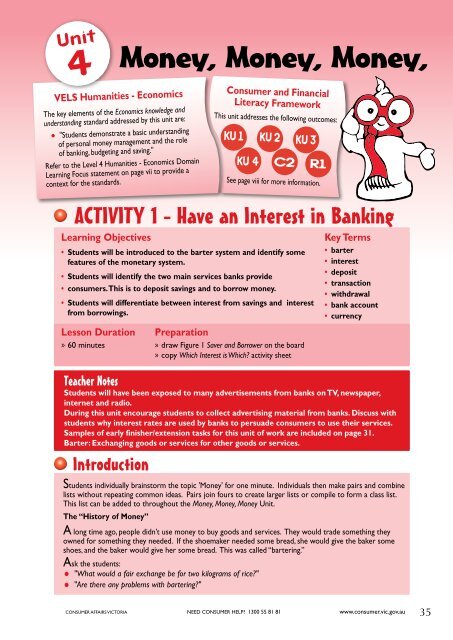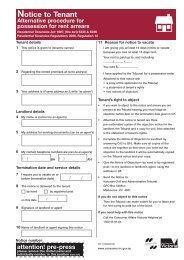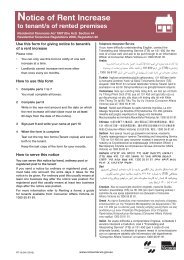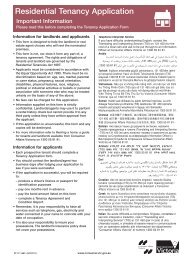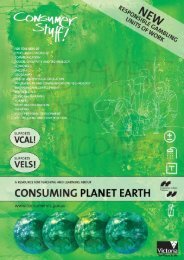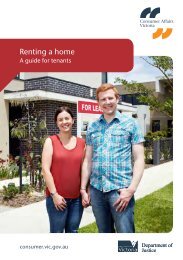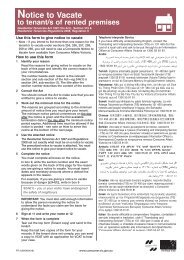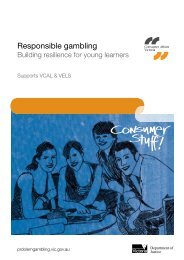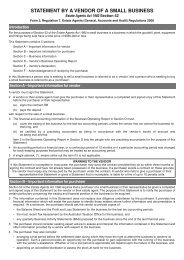Consumer Stuff for kids (PDF, 6.2 MB) - Consumer Affairs Victoria
Consumer Stuff for kids (PDF, 6.2 MB) - Consumer Affairs Victoria
Consumer Stuff for kids (PDF, 6.2 MB) - Consumer Affairs Victoria
You also want an ePaper? Increase the reach of your titles
YUMPU automatically turns print PDFs into web optimized ePapers that Google loves.
VELS Humanities - Economics<br />
The key elements of the Economics knowledge and<br />
understanding standard addressed by this unit are:<br />
"Students demonstrate a basic understanding<br />
of personal money management and the role<br />
of banking, budgeting and saving."<br />
Refer to the Level 4 Humanities - Economics Domain<br />
Learning Focus statement on page vii to provide a<br />
context <strong>for</strong> the standards.<br />
•<br />
Unit<br />
4<br />
<strong>Consumer</strong> and Financial<br />
Literacy Framework<br />
This unit addresses the following outcomes:<br />
KU 1<br />
See page viii <strong>for</strong> more in<strong>for</strong>mation.<br />
ACTIVITY 1 - Have an Interest in Banking<br />
Learning Objectives<br />
• Students will be introduced to the barter system and identify some<br />
features of the monetary system.<br />
• Students will identify the two main services banks provide<br />
• consumers. This is to deposit savings and to borrow money.<br />
• Students will differentiate between interest from savings and interest<br />
from borrowings.<br />
Lesson Duration<br />
» 60 minutes<br />
Preparation<br />
» draw Figure 1 Saver and Borrower on the board<br />
» copy Which Interest is Which? activity sheet<br />
Key Terms<br />
• barter<br />
• interest<br />
• deposit<br />
• transaction<br />
• withdrawal<br />
• bank account<br />
• currency<br />
Teacher Notes<br />
Students will have been exposed to many advertisements from banks on TV, newspaper,<br />
internet and radio.<br />
During this unit encourage students to collect advertising material from banks. Discuss with<br />
students why interest rates are used by banks to persuade consumers to use their services.<br />
Samples of early finisher/extension tasks <strong>for</strong> this unit of work are included on page 31.<br />
Barter: Exchanging goods or services <strong>for</strong> other goods or services.<br />
Introduction<br />
Money, Money, Money,<br />
KU 4<br />
KU 2<br />
C2<br />
KU 3<br />
Students individually brainstorm the topic 'Money' <strong>for</strong> one minute. Individuals then make pairs and combine<br />
lists without repeating common ideas. Pairs join fours to create larger lists or compile to <strong>for</strong>m a class list.<br />
This list can be added to throughout the Money, Money, Money Unit.<br />
The “History of Money”<br />
A long time ago, people didn’t use money to buy goods and services. They would trade something they<br />
owned <strong>for</strong> something they needed. If the shoemaker needed some bread, she would give the baker some<br />
shoes, and the baker would give her some bread. This was called “bartering.”<br />
Ask the students:<br />
"What would a fair exchange be <strong>for</strong> two kilograms of rice?"<br />
"Are there any problems with bartering?"<br />
R1<br />
CONSUMER AFFAIRS VICTORIA NEED CONSUMER HELP? 1300 55 81 81 www.consumer.vic.gov.au<br />
35


